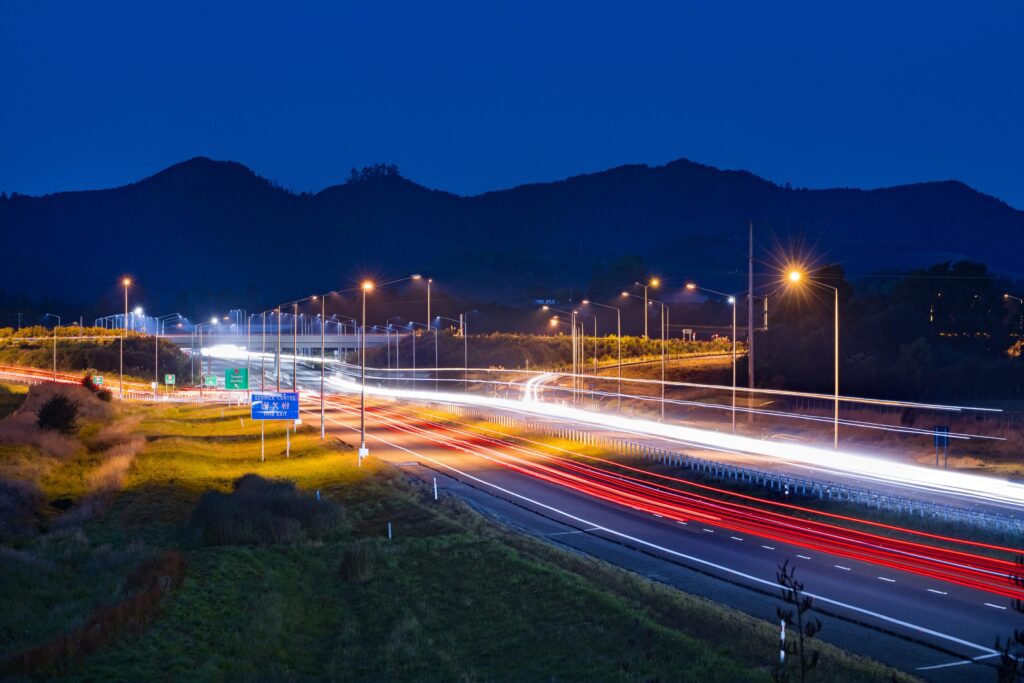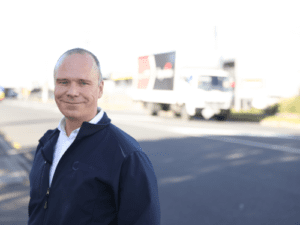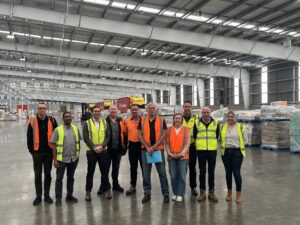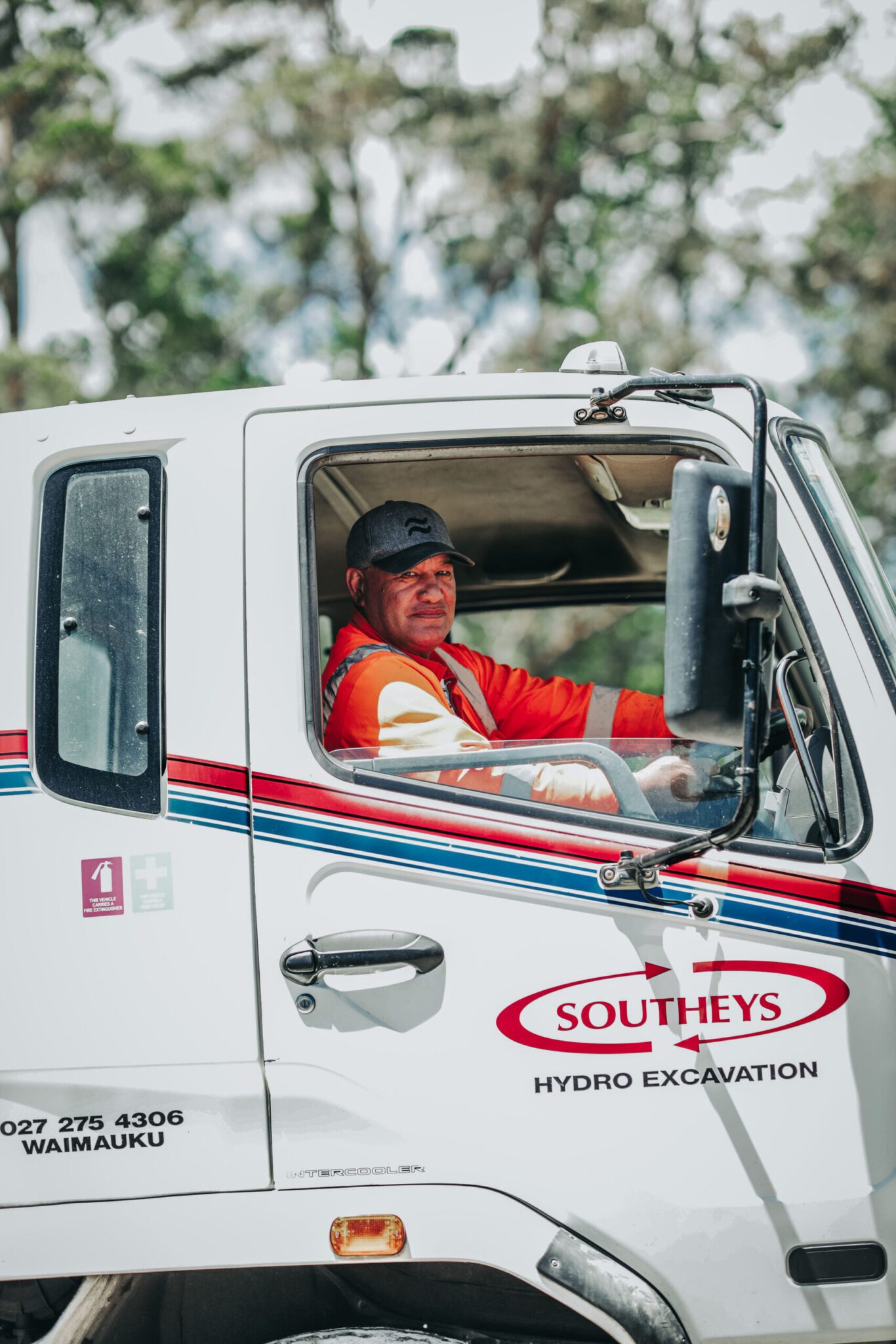The recently completed Waikato Expressway is a cracking example of how first-class infrastructure can unlock the potential of a region, provide tangible economic gains and efficiencies, while delivering much-needed safety outcomes for the transport industry and other road users. In fact, it is so good, that some would suggest the Waikato Expressway should be the blueprint for how future critical roading infrastructure is delivered, minus the 30-year timeframe.
With planning starting in the 1960’s, and construction commencing in the 1990’s for the Pokeno bypass and Tamahere interchange, it seems the efficiencies promised are indeed a reality for users of this critical piece of roading infrastructure.
Across the 102km of dual carriageway from Pokeno to south of Cambridge, motorists are able to travel at speeds seen in other countries but rarely experienced in New Zealand – the Waikato Expressway allows for 110km/h on the 78km stretch of road from Hampton Downs to its end near Cambridge.
According to Brett Gliddon, General Manager Transport Services, Waka Kotahi NZ Transport Agency, “The benefits for freight are significant with approximately 32% of all freight movements in New Zealand moving through the Waikato region, and these numbers are expected to increase to 50% over the next 30 years as our population grows.
“There has long been much talk of unlocking the ‘Golden Triangle’ of Auckland, Hamilton and Tauranga. This Golden Triangle refers to the movement of freight between the coastal ports of Auckland and Tauranga, supported in Hamilton by the Ruakura Superhub inland port.
“A significant milestone was reached this year with the Ruakura Inland Port officially opened in Hamilton in September, with the first 9-hectares of what will eventually be a 30-hectare port. With 93% of all New Zealand freight moved by road – the remainder by rail or coastal shipping – improved efficiency by removing the stop/start nature of travelling through urban centres such as Hamilton, Huntly and Ngāruawāhia adds significant economic benefits.”
Telematics data shows journey times have reduced by up to 30 minutes for freight moving through the region, with transport operators experiencing tangible benefits from faster journey times. Approximately one third of trucks now bypass Hamilton City without stopping. Officials promised the region would see improvements to economic growth and productivity once efficient movement of both people and freight was achieved – and indications to date suggest the Waikato Expressway is delivering on these promises.
John Baillie, owner, Baillie Transport says, “The Waikato Expressway is delivering savings across the board in terms of reduced fuel, emissions, vehicle wear and tear, and congestion. But the most critical impact is the safety value it delivers, without doubt lives have already been saved. If the Government is serious about Road to Zero, then this road provides the blueprint for safer roads.
“Added to the safety, the reduction in journey times has been significant. We now have the ability to bypass Hamilton City if we are transiting through the Waikato or heading to Tauranga. We can deliver to our Hamilton customers more efficiently via the Expressway exits that connect us to key areas of the city while avoiding the centre.
“The Waikato Expressway is a great piece of infrastructure that leaves people wanting more – it’s marvellous. Now, we just need the Piarere extension and a link up to the Kaimai’s. That would be truly revolutionary. The current road simply cannot cope with the volume of traffic, ongoing investment is critical, you simply cannot ignore investment in the Golden Triangle.”
Justin Tighe-Umbers, CEO, National Road Carriers (NRC), says, “For transport operators the Waikato Expressway is a massive leap forward. It delivers greater capacity through the dual carriageway in either direction, reduced fuel and vehicle maintenance costs, more efficient freight delivery and safer journeys with less crash risk.”
Since the Hamilton section opened in mid-2022 Waka Kotahi traffic counting sites have noted an increase in vehicles on SH1 (Karapiro) of approximately 2000 vehicles per day. Anecdotally a proportion of these will have been using SH27 as an alternative route previously.
“It hasn’t all been smooth sailing. The Ngāruawāhia section completed in late 2013 experienced surface issues, which led to a bit of a learning curve for the roading engineers. I understand this related to the underlying geotechnical conditions, an innovative technique was trialled which unfortunately has not lasted the test of time, with water ingress causing issues,” says Justin. “Obviously this has been frustrating for truck drivers and motorists, but it’s pleasing that Waka Kotahi applied learnings from this issue to pavement designs for future sections such as the Huntly and Hamilton bypasses.”
Brett adds, “We are remedying this section of road from late 2022 until late 2023 and combining this with safety improvements to bring this section up to the 110km/h standard. This will mean delays due to reduced lane availability while we undertake the work, however, the short-term pain promises to add significant efficiencies once completed moving into 2024.”
Further work is planned from the end of the Expressway near Cambridge to the SH1/SH29 intersection at Piarere, where motorists can turn onto SH29 towards Tauranga, or continue to south on SH1 towards Taupō.
“We understand Waka Kotahi has started consenting work for an extension of the Expressway south of Cambridge. But it’s frustrating funding to construct the extension has not yet been confirmed. Unfortunately, road infrastructure is falling victim to a three-year election cycle where Government priorities change, and critical infrastructure funding is sacrificed. It’s our view that large-scale infrastructure and funding needs to sit outside the usual government cycle to be better protected and ensure progress does not stall,” says Justin.
“The Waikato experiences the second-highest death and serious injury (DSI) statistics behind Auckland, with speed and head-on crashes the two greatest risks on the state highway network. Extending this section of the Expressway needs to be treated with the highest priority by Government.”
This desire to invest in essential infrastructure that delivers safer roads is echoed by Waka Kotahi.
“We are progressing the consenting of the future route and committed to improving safety on the existing highway,” says Brett. “These safety improvements include installing sections of central median barrier, replacing high-risk intersections with roundabouts, raised line marking (rumble strips) and removal of some passing lanes. Data shows that these improvements deliver improved safety for motorists, and we are committed to doing everything we can to lower New Zealand’s DSI statistics.”
The first central median barrier Waka Kotahi installed in this area was hit 40 times within the first 12 months – that’s 40 potential head-on crashes which were avoided. Waka Kotahi research shows that removing passing lanes on this section does not negatively impact travel times – in fact in peak periods it improves times as people don’t need to slow down to merge at the end of the lanes.
Planning for the construction of a roundabout at the SH1/SH29 intersection to improve safety is well advanced and construction is expected to commence in 2023, subject to consents being issued.





